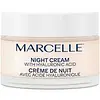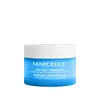What's inside
What's inside
 Key Ingredients
Key Ingredients

 Benefits
Benefits

 Concerns
Concerns

No concerns
 Ingredients Side-by-side
Ingredients Side-by-side

Water
Skin ConditioningIsononyl Isononanoate
EmollientGlycerin
HumectantPropanediol
SolventCetearyl Olivate
C10-18 Triglycerides
EmollientNiacinamide
SmoothingSodium Hyaluronate
Humectant1,2-Hexanediol
Skin ConditioningSodium Polyacrylate
AbsorbentSorbitan Olivate
EmulsifyingGlyceryl Stearate
EmollientArgania Spinosa Kernel Oil
EmollientDimethicone
EmollientSodium Gluconate
Skin ConditioningTocopheryl Acetate
AntioxidantCaprylhydroxamic Acid
Octyldodecanol
EmollientCI 77491
Cosmetic ColorantWater, Isononyl Isononanoate, Glycerin, Propanediol, Cetearyl Olivate, C10-18 Triglycerides, Niacinamide, Sodium Hyaluronate, 1,2-Hexanediol, Sodium Polyacrylate, Sorbitan Olivate, Glyceryl Stearate, Argania Spinosa Kernel Oil, Dimethicone, Sodium Gluconate, Tocopheryl Acetate, Caprylhydroxamic Acid, Octyldodecanol, CI 77491
Water
Skin ConditioningPropanediol
SolventDimethicone
EmollientGlyceryl Stearate
EmollientOlea Europaea Oil Unsaponifiables
Skin ConditioningGlycerin
HumectantCetyl Alcohol
EmollientPolyglyceryl-2 Stearate
EmulsifyingButyrospermum Parkii Butter
Skin ConditioningCaprylic/Capric Triglyceride
MaskingOctyldodecyl Myristate
EmollientStearyl Alcohol
Emollient1,2-Hexanediol
Skin ConditioningCandelilla Cera
EmollientChondrus Crispus Extract
Skin ConditioningAllantoin
Skin ConditioningLactobacillus Ferment
Skin ConditioningChlorella Vulgaris/Lupinus Albus Protein Ferment
Skin ConditioningN-Prolyl Palmitoyl Tripeptide-56 Acetate
Skin ConditioningPanthenol
Skin ConditioningAvena Sativa Kernel Extract
AbrasiveTapioca Starch
CI 77891
Cosmetic ColorantTocopheryl Acetate
AntioxidantSodium Stearoyl Glutamate
CleansingMica
Cosmetic ColorantSodium Gluconate
Skin ConditioningCaprylhydroxamic Acid
Xanthan Gum
EmulsifyingPentylene Glycol
Skin ConditioningHydroxyacetophenone
AntioxidantSodium Benzoate
MaskingPotassium Sorbate
PreservativeCaprylyl Glycol
EmollientSodium Hyaluronate
HumectantWater, Propanediol, Dimethicone, Glyceryl Stearate, Olea Europaea Oil Unsaponifiables, Glycerin, Cetyl Alcohol, Polyglyceryl-2 Stearate, Butyrospermum Parkii Butter, Caprylic/Capric Triglyceride, Octyldodecyl Myristate, Stearyl Alcohol, 1,2-Hexanediol, Candelilla Cera, Chondrus Crispus Extract, Allantoin, Lactobacillus Ferment, Chlorella Vulgaris/Lupinus Albus Protein Ferment, N-Prolyl Palmitoyl Tripeptide-56 Acetate, Panthenol, Avena Sativa Kernel Extract, Tapioca Starch, CI 77891, Tocopheryl Acetate, Sodium Stearoyl Glutamate, Mica, Sodium Gluconate, Caprylhydroxamic Acid, Xanthan Gum, Pentylene Glycol, Hydroxyacetophenone, Sodium Benzoate, Potassium Sorbate, Caprylyl Glycol, Sodium Hyaluronate
Ingredients Explained
These ingredients are found in both products.
Ingredients higher up in an ingredient list are typically present in a larger amount.
1,2-Hexanediol is a synthetic liquid and another multi-functional powerhouse.
It is a:
- Humectant, drawing moisture into the skin
- Emollient, helping to soften skin
- Solvent, dispersing and stabilizing formulas
- Preservative booster, enhancing the antimicrobial activity of other preservatives
Caprylhydroxamic Acid is a chelating agent.
Chelating agents help prevent metal ions from binding to other ingredients. This helps prevent unwanted reactions and effects from using the product.
Caprylhydroxamic Acid is often used with natural antimicrobial products as an alternative to preservatives.
Learn more about Caprylhydroxamic AcidDimethicone is a type of synthetic silicone created from natural materials such as quartz.
What it does:
Dimethicone comes in different viscosities:
Depending on the viscosity, dimethicone has different properties.
Ingredients lists don't always show which type is used, so we recommend reaching out to the brand if you have questions about the viscosity.
This ingredient is unlikely to cause irritation because it does not get absorbed into skin. However, people with silicone allergies should be careful about using this ingredient.
Note: Dimethicone may contribute to pilling. This is because it is not oil or water soluble, so pilling may occur when layered with products. When mixed with heavy oils in a formula, the outcome is also quite greasy.
Learn more about DimethiconeGlycerin is already naturally found in your skin. It helps moisturize and protect your skin.
A study from 2016 found glycerin to be more effective as a humectant than AHAs and hyaluronic acid.
As a humectant, it helps the skin stay hydrated by pulling moisture to your skin. The low molecular weight of glycerin allows it to pull moisture into the deeper layers of your skin.
Hydrated skin improves your skin barrier; Your skin barrier helps protect against irritants and bacteria.
Glycerin has also been found to have antimicrobial and antiviral properties. Due to these properties, glycerin is often used in wound and burn treatments.
In cosmetics, glycerin is usually derived from plants such as soybean or palm. However, it can also be sourced from animals, such as tallow or animal fat.
This ingredient is organic, colorless, odorless, and non-toxic.
Glycerin is the name for this ingredient in American English. British English uses Glycerol/Glycerine.
Learn more about GlycerinGlyceryl Stearate is a mix of glycerin and stearic acid.
It is used to stabilize the mixing of water and oil ingredients. By preventing these ingredients from separating, it can help elongate shelf life. It can also help thicken the product's texture.
As an emollient, it helps soften skin and supports barrier-replenishing ingredients.
In cosmetics, Glyceryl Stearate is often made from vegetable oils or synthetically produced.
This ingredient may not be fungal-acne safe
Fun fact: The human body also creates Glyceryl Stearate naturally.
Learn more about Glyceryl StearatePropanediol is an all-star ingredient. It softens, hydrates, and smooths the skin.
It’s often used to:
Propanediol is not likely to cause sensitivity and considered safe to use. It is derived from corn or petroleum with a clear color and no scent.
Learn more about PropanediolThis is the synthetic salt of gluconic acid, a form of PHA and mild exfoliant.
It is mainly used to stabilize oil and butter formulations from going bad. Sodium gluconate is a humectant, pH regulator, and chelating agent.
Chelating agents help neutralize unwanted metals from affecting the formulation.
Sodium gluconate is water-soluble.
Learn more about Sodium GluconateSodium Hyaluronate is hyaluronic acid's salt form. It is commonly derived from the sodium salt of hyaluronic acid.
Like hyaluronic acid, it is great at holding water and acts as a humectant. This makes it a great skin hydrating ingredient.
Sodium Hyaluronate is naturally occurring in our bodies and is mostly found in eye fluid and joints.
These are some other common types of Hyaluronic Acid:
Learn more about Sodium HyaluronateTocopheryl Acetate is AKA Vitamin E. It is an antioxidant and protects your skin from free radicals. Free radicals damage the skin by breaking down collagen.
One study found using Tocopheryl Acetate with Vitamin C decreased the number of sunburned cells.
Tocopheryl Acetate is commonly found in both skincare and dietary supplements.
Learn more about Tocopheryl AcetateWater. It's the most common cosmetic ingredient of all. You'll usually see it at the top of ingredient lists, meaning that it makes up the largest part of the product.
So why is it so popular? Water most often acts as a solvent - this means that it helps dissolve other ingredients into the formulation.
You'll also recognize water as that liquid we all need to stay alive. If you see this, drink a glass of water. Stay hydrated!
Learn more about Water